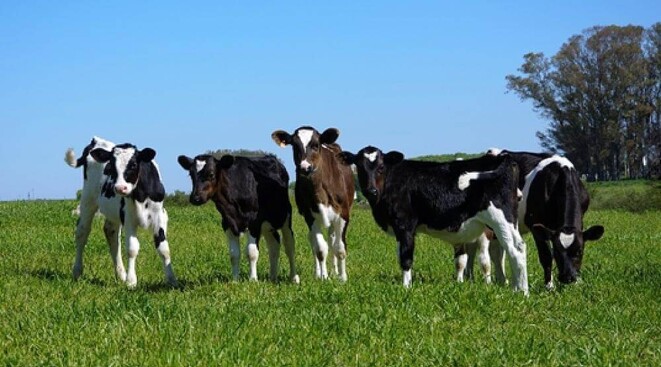What diseases do we need to look for in the warmer months?
We have talked elsewhere about the impact, monitoring and treatment of issues with trace elements and parasites on our youngstock. So instead of covering more about those, this article is an overview of some more common diseases seen in weaned calves to keep an eye out for this summer.
Coccidiosis
Caused by a parasite family called Eimeria, this disease tends to be seen as a sudden onset of diarrhoea, which may contain blood and mucus. Coccidiosis can vary from causing dehydration and a decreased appetite right through to death. Coccidia parasites tend to cause issues in calves 3-8 months old. There are other diseases and issues that can cause diarrhoea like this in weaned cattle such as Salmonella, other parasites and BVD/mucosal disease. To confirm a diagnosis of coccidia we use a faecal sample and look for the eggs (oocysts). Treatment of affected calves is with an appropriate coccidiostat drug.
Yersiniosis
Like coccidiosis, yersiniosis can also present as diarrhoea. However, yersiniosis is caused by a bacteria found in the gut of cattle (and deer) - Yersinia paratuberculosis. Yersiniosis is most common in cattle 6-12 months old, during poor weather. The disease tends to only affect one animal (more sporadic) at a time and is diarrhoea which tends to be more chronic. Cattle affected by yersiniosis tend to be depressed and dehydrated but not run a fever. To confirm a case of yersiniosis we have to find the bacteria in the faeces via culture at the lab, along with clinical signs that fit with the disease. It is usually treatable with a course of appropriate antibiotics.
Polioencephalomalacia
Polioencephalomalacia (PEM) or thiamine/ B1 deficiency is most commonly seen in youngstock. In New Zealand, we tend to see it in 6-12-month-old calves, on pasture over summer.
Typically we see PEM as:
- Depression
- Appearing to be blind
- A lack of coordination
- Champing of jaws and head pressing
For cases of PEM, the best method we have to diagnose is seeing whether animals respond to treatment with thiamine/ B1 injections, otherwise, post-mortem examination changes can be seen in the brain. Often there is a history of a change in feed e.g. moving from rougher pasture to lush new grass, so avoiding doing this suddenly if possible can also help prevent it from occurring.
These are all relatively frequently diagnosed diseases in youngstock by the team here, however, as cattle can show similar signs with other diseases we would definitely recommend giving either the clinic or your KeyVet a call to work out the best plan if you are seeing any disease in your young calves.
- Christine Utting

